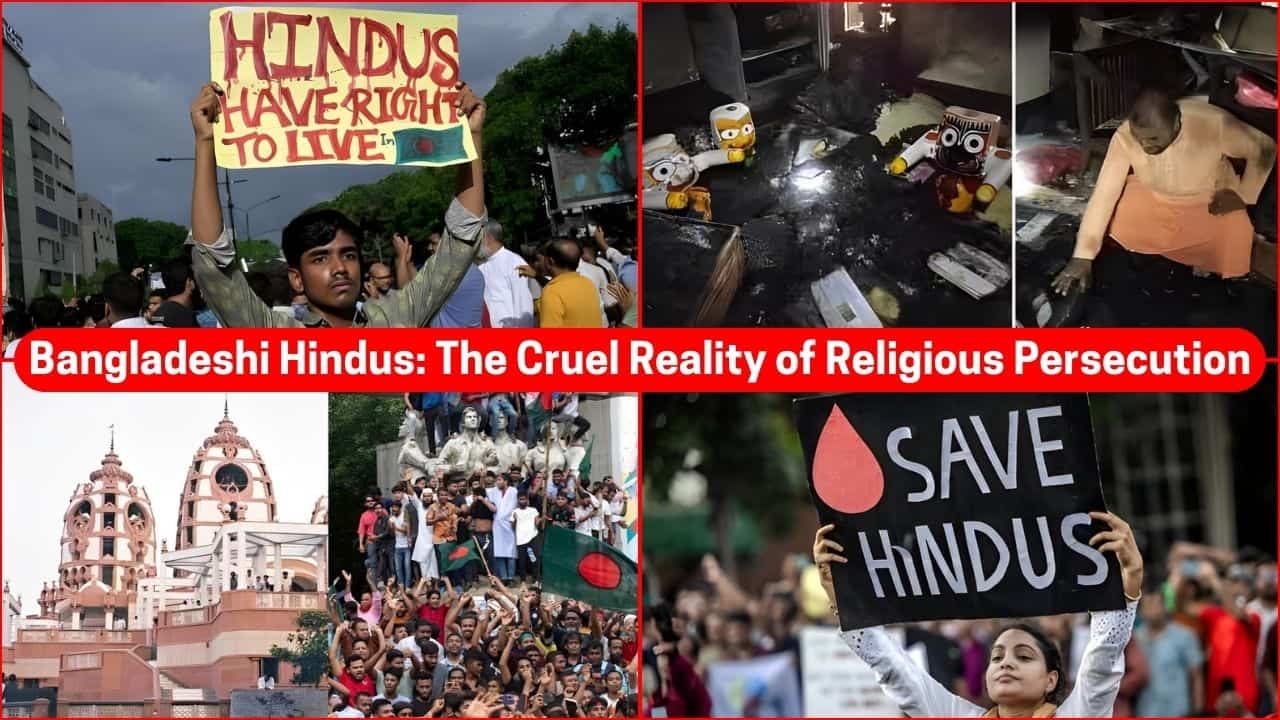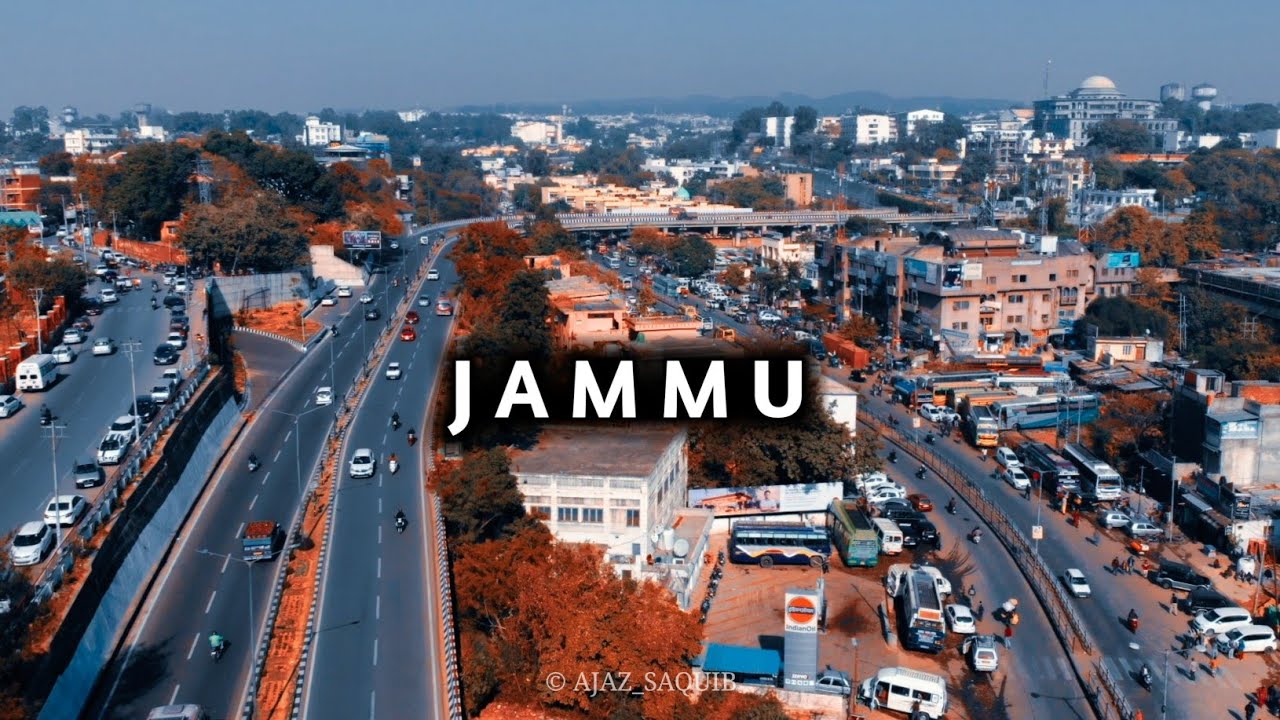
How Media Bias Mutes Victims and Masks Islamist Terror with Euphemisms. This piece exposes three patterns: anti-Hindu, anti-Jewish, and the broader appeasement of Islamist violence.
In a world where information is power, the stories that are told by MSM (Mainstream Media) and those that are hidden – shape global perceptions, policy, and ultimately, the fate of entire communities. Nowhere is this more apparent than in the Western media’s coverage of Islamist Terror against non-Muslims / minorities. When Hindus in India or Jews in Israel and the diaspora are targeted by Islamist extremists, the reflex of many major media outlets is not to confront the horror, but to sanitize, rationalize, or even erase it.
Many in civil society unquestioningly accept mainstream media narratives, rarely engaging in critical thinking. As a result, they are left completely unaware or misled about the true nature of these issues.
A Tale of Two Peoples, One Pattern of Erasure
The recent massacre of 28 Hindus in Pahalgam, Kashmir is a chilling example. In April 2025, Islamist terrorists stormed a peaceful spot in Pahalgam, methodically checking IDs, separating Hindus, and executing them. The perpetrators, affiliated with a Pakistan-backed group, boasted about their motives, openly targeting non-Muslims and Hindus. Yet, Western headlines described the victims as “tourists” or “civilians” burying the religious motive deep in the text, if at all. “Militants” replaced “terrorists” and the ideological hatred behind the attack was softened or omitted.
This is not an isolated incident. It is part of a persistent, global pattern – a pattern that repeats every time Islamist terror claims new victims, whether in South Asia, Europe, or the Middle East. When Jews in Israel or the West are targeted, the same editorial evasions are on display.
The result is a dangerous narrative: one that erases the specificity of the victims, shields the ideology of the perpetrators, and leaves entire communities feeling invisible and unprotected.

Ten Times Western Media Downplayed Islamist Crimes Against Hindus in India
- Pahalgam Terror Attack, Kashmir (2025): 28 Hindu tourists were executed after being identified by religion by Islamist terrorists from The Resistance Front, a Lashkar-e-Taiba proxy. Media Pattern: Major Western outlets like The New York Times, BBC, CNN, Reuters, and AP used neutral or euphemistic terms such as “militants” or “gunmen” avoided the word “terrorist” and downplayed the religious targeting. Some even referred to the victims as “non-Muslims” erasing the specificity of anti-Hindu violence.
- Nagpur Riots (2025): Islamist mob violence against Hindus in Nagpur, Maharashtra, following rumors about protests against Mughal emperor Aurangzeb’s tomb. Media Pattern: Outlets like the BBC and New York Times framed the violence as a reaction to “Hindu nationalist” provocations, blamed Hindus and a Bollywood film for instigating tensions, and failed to highlight the pre-planned nature of the Islamist violence.
- Mhow Violence (2025): Islamist mob violence against Hindus in Mhow, Madhya Pradesh. Media Pattern: Western media coverage was scant or framed the violence as part of “communal tensions” downplaying the anti-Hindu aspect
- Nuh Violence, Haryana (2023): Anti-Hindu violence during religious processions.
- Media Pattern: Western media either ignored the incident or presented it as “communal clashes” minimizing the anti-Hindu targeting and instead focusing on alleged provocations by Hindu groups.
- Udaipur Beheading of Kanhaiya Lal (2022): Hindu tailor Kanhaiya Lal was beheaded by Islamists for alleged social media posts to support the statement made by Nupur Sharma which she quoted from the religious text of Islam. Media Pattern: Some Western outlets framed the murder as a “local dispute” or over “blasphemy” without emphasizing the religious hate motive or the pattern of Islamist violence against Hindus.
- Anti-Hindu Delhi Riots (2020): Widespread violence in Delhi during which many Hindus were killed and properties destroyed. Media Pattern: Western outlets often described the violence as “anti-Muslim pogroms” ignoring or minimizing the deaths and planned attacks and targeting of Hindus by Islamist mobs.
- Ethnic Cleansing of Kashmiri Hindus (Late 1980s–1990s): Over 500,000 Kashmiri Pandits (Hindus) were forced to flee after targeted killings and threats by Islamist militants. Media Pattern: Western media has been repeatedly accused of underreporting or ignoring this episode, often framing it as a “migration” rather than an ethnic cleansing or religiously motivated exodus.
- Amarnath Pilgrim Attacks (Various Years): Multiple attacks on Hindu pilgrims traveling to the Amarnath shrine in Kashmir, resulting in deaths and injuries.
- Media Pattern: Coverage often focused on the broader “Kashmir conflict” or generalized violence, rather than highlighting the targeting of Hindu religious pilgrims by Islamist groups.
- Vaishno Devi Pilgrim Attacks: Attacks on Hindu pilgrims enroute to the Vaishno Devi shrine. Media Pattern: Similar to Amarnath, the religious targeting of Hindus was often omitted or buried under broader narratives about unrest in Kashmir.
- Grooming Jihad/Love Jihad Cases: Systematic targeting of Hindu women for conversion through deceit and coercion. Media Pattern: Western media routinely dismisses this phenomenon as a “conspiracy theory” ignoring documented cases and the pattern of targeting Hindu women for religious conversion.
The Jews Parallel: Ten Incidents of Media Evasion
The Jewish community, both in Israel and the diaspora, has repeatedly faced Islamist violence – often motivated by explicit antisemitism. Yet, Western media coverage has too often minimized, obscured, or rationalized these attacks:
- Colleyville Synagogue Hostage Crisis (Texas, 2022): A British-Pakistani Muslim took a rabbi and congregants hostage at Congregation Beth Israel, ranting about Jews and Israel. Media Pattern: Despite the perpetrator’s explicit antisemitic motives, major outlets echoed an FBI agent’s initial claim that the attack was “not specifically related to the Jewish community”. Only a handful of publications, such as the Washington Post, fully addressed the antisemitic nature of the attack, while most others focused on the perpetrator’s mental health or broader grievances
- Los Angeles Sushi Restaurant Attack (2021): Palestinian sympathizers attacked Jewish diners at a sushi restaurant. Media Pattern: Local media, such as KABC-TV, headlined the incident as “Mideast tensions lead to LA fight” framing it as a generic altercation rather than a targeted antisemitic assault.
- Lucy Dee and Daughters’ Murder (West Bank, 2023): Lucy Dee and her daughters Maia and Rina were murdered in their car by Palestinian gunmen. Media Pattern: CNN’s Christiane Amanpour described the attack as a “shootout” suggesting a mutual exchange of fire rather than a one-sided execution of civilians. It took a month and legal threats for CNN to issue an apology.
- Brooklyn Antisemitic Attacks: Orthodox Jews have been repeatedly attacked in Brooklyn, often by young men from other minority groups. Media Pattern: Coverage frequently contextualizes these assaults as a byproduct of “gentrification” or socioeconomic tensions, rather than recognizing them as hate crimes motivated by antisemitism.
- Amsterdam Kristallnacht Commemoration Violence (2024): Violence erupted during a commemoration for Kristallnacht in Amsterdam, with some reports of anti-Jewish sentiment. Media Pattern: Western outlets framed the events as “attacks on Jews” but also amplified narratives minimizing or denying antisemitic intent, suggesting instead that local Jewish safety concerns were being “weaponized” for political purposes.
- 2021 Gaza Conflict Coverage: During the conflict, Palestinian mobs attacked common Jews in Israeli cities like Lod and Bat Yam. Media Pattern: Western media often portrayed these incidents as “communal violence” or “clashes”, obscuring the targeted nature of the attacks against Jews and focusing more on Israeli military actions.
- Jewish Museum of Brussels Shooting (2014): An ISIS-affiliated gunman killed four people at the Jewish Museum. Media Pattern: Some coverage described the attack as a “shooting incident” or “museum attack” downplaying the antisemitic, Islamist motive behind the massacre
- Paris Hypercacher Kosher Supermarket Attack (2015): An Islamist terrorist killed four Jews at a kosher supermarket. Media Pattern: Coverage often lumped the incident together with the Charlie Hebdo attack, diluting the specifically antisemitic targeting of the victims and sometimes focusing on the broader context of “terror in Paris”.
- London Hanukkah Stabbing (2019): A man stabbed several Jews in a rabbi’s home during Hanukkah. Media Pattern: Reporting often emphasized the attacker’s mental health issues and failed to highlight the antisemitic and religiously motivated nature of the crime.
- 2021 Pro-Palestinian Demonstrations: Jewish individuals and synagogues were targeted during pro-Palestinian protests in cities like London, New York, and Los Angeles. Media Pattern: Media frequently described these events as “protests” or “demonstrations” with little attention to the antisemitic chants, threats, and violence directed at Jews.
Now The Universal Pattern:
This pattern is equally evident in the coverage of Islamist violence against non-Muslims worldwide:
- Hamas Massacre, Israel (2023): Over 1,400 Israelis killed; focus quickly shifted to Israel’s response, not the massacre’s brutality.
- Vienna Shooting, Austria (2020): Initially described as a “lone gunman,” with slow acknowledgment of jihadist motive.
- Sri Lanka Easter Bombings (2019): Over 250 Christians were killed. Headlines referred to “Easter worshippers” omitting the Islamist motive and Christian targeting.
- Manchester Arena Bombing, UK (2017): Reports highlighted attacker’s troubled background, not jihadist indoctrination.
- Brussels Bombings, Belgium (2016): Media emphasized attackers’ backgrounds as “disaffected youth,” not their radicalization.
- Normandy Church Attack, France (2016): Described as a “hostage situation,” minimizing the targeting of Christians.
- Charlie Hebdo Attack, Paris (2015): Focused on “free speech” and “Islamophobia,” downplaying jihadist motives.
- San Bernardino Shooting, USA (2015): Early reporting hesitated to label it Islamist terrorism, focusing on workplace grievances.
- Bataclan Theatre Attack, Paris (2015): Focused on attackers’ “alienation,” not their ideological motives.
The Anatomy of Whitewash
What unites these cases is not just the violence, but the media’s response:
- Euphemistic Language: “Militants”, “clashes” or “shootouts” replace “terrorists” and “massacres.”
- Shifting Focus: Immediate pivot to social issues, policy debates, or the response of authorities.
- Minimizing Religious Motive: Reluctance to highlight when Jews or Hindus are targeted for their faith.
- False Equivalence: Framing attacks as part of a “cycle of violence” blurring the line between perpetrator and victim.
- Contextualization and Deflection: Shifting focus to MENTAL HEALTH, socioeconomic factors, or geopolitics, rather than naming Islamist antisemitism or Hinduphobia.
This is not journalism. It is narrative management – a subtle but extremely powerful form of information warfare that shapes global perceptions, influences policy, and emboldens those who traffic in hate.
Why Does It Happen?
The reasons are complex. Some editors fear stoking Islamophobia; others are guided by ideological biases that cast Western or Israeli actions as the root cause of all violence. There is a reluctance to confront the reality that religiously motivated violence exists, and that its victims are often minorities – Hindus in Kashmir, Jews in Israel and the diaspora, Christians in Sri Lanka.
But whatever the rationale, the effect is the same: the suffering of these communities is erased, their killers are shielded from scrutiny, and the ideological roots of such violence are left unchallenged.
The Cost of Silence
This silence is not neutral. It emboldens extremists, erodes public trust in the media, and leaves entire communities feeling abandoned. It tells the world’s Hindus and Jews that their pain is less worthy of attention, that their deaths are less newsworthy, and that their killers will be rationalized or ignored.
As Suhag Shukla of the Hindu American Foundation has argued, “This isn’t just a terror attack – it’s an anti-Hindu hate crime. The world must call it by its name.” The same is true for attacks on Jews. When the mainstream media fails to do so, it is not merely negligent – it is complicit.
A Call for Moral Clarity
If the world is to confront the scourge of religiously motivated violence, it must begin by telling the truth. That means calling Islamist terror by its name, acknowledging the targeting of minorities, and refusing to hide behind euphemism or false equivalence.
To remain silent, or to play along with the lies, is to participate in the erasure of the victims and the absolution of the perpetrators.
The world must choose: moral clarity or moral cowardice. In the face of such unspeakable atrocity, there is no middle ground.
Where do you stand?






